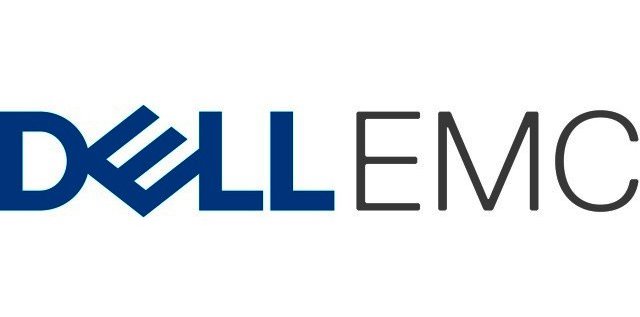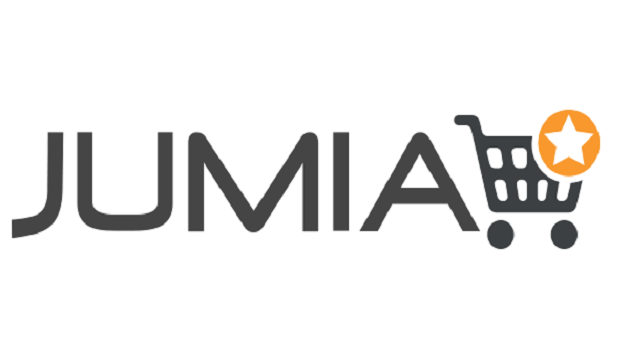E-Business
Dell EMC Expands Data Protection Capabilities

Dell EMC has unveiled new and enhanced capabilities to the Dell EMC Data Domain and Integrated Data Protection Appliance (IDPA) portfolio of backup storage appliances designed to offer organisations real-world flexibility and value with expanded multi-cloud capabilities and improved performance.
The enhancements also provide mid-sized organisations and remote offices of larger organisations with more choice and options in obtaining enterprise-level data protection.
According to IDC, 92 percent of organisations have adopted a cloud environment with 64 percent adopting a multi-cloud approach.3 With a mix of different clouds, protecting data across workloads while meeting compliance and security requirements is a critical challenge for many organisations.
In fact, according to a study conducted by IDC for Dell EMC, cross-cloud support was the highest recognised data protection deficiency for IT transformation.4 Dell EMC recognises this challenge and continues to enhance its data protection appliances to help customers mitigate risk and protect their most valuable asset – their data – in multi-cloud environments.
Multi-cloud capabilities
Data Domain OS 6.2 and IDPA 2.3 software now provide customers with even more choice to extend their data protection to public clouds with expanded Cloud Tier support to Google Cloud Platform and Alibaba Cloud, thereby, enabling more flexibility for long-term retention.
This is in addition to support already offered across AWS, Microsoft Azure, Dell EMC Elastic Cloud Storage, Virtustream, Ceph, IBM Cloud Open Storage, AWS Infrequent Access, Azure Cool Blob storage and Azure Government Cloud. Also, a new Free-space Estimator Tool for Cloud Tier helps enable more efficient capacity management to help reduce on-premises and cloud storage costs.
Dell EMC also expanded its ecosystem of supported public cloud providers for Data Domain Virtual Edition (DD VE), which provides software defined data protection on-premises and in public clouds, to AWS GovCloud, Azure Government Cloud and Google Cloud Platform. This adds to the already supported platforms AWS S3 and Azure Hot Blob.
The expanded cloud ecosystem combined with the previously announced increased capacity for DD VE – up to 96TB per instance – ensures customers will receive the same level of protection within their growing cloud environments as they receive from their on-premises Dell EMC appliances.
Additionally, Native Cloud Disaster Recovery is now available across the entire IDPA family, enabling customers to cost-effectively failover to a cloud environment with end-to-end orchestration. Customers no longer have to bear the expense and management of setting up and maintaining a secondary site for disaster recovery and can failover to public clouds with ease in case of a disaster event and failback when the issues are resolved.
With this expansion, all Data Domain and IDPA models support AWS, including VMware Cloud on AWS, and Microsoft Azure for Cloud Disaster Recovery.
Organisations will also find peace of mind in that all Dell EMC data protection appliances provide modern, simple-to-manage user interfaces. Also, administrators can easily manage multiple Data Domain and DD VE appliances – on-premises or in public clouds – from a single user interface with the Data Domain Management Center.
Enhanced performance
Updates to the IDPA family now provide more performance for Instant Access and Restore with an enhanced data cache that results in up to four times more inputs/outputs per second (IOPS), providing up to 40,000 IOPS with as little as 20 milliseconds latency.5
Also, Data Domain appliances provide faster restores from an on-premises appliance and faster recalls from public clouds. Given these enhancements, organisations can now restore their data up to two-and-a-half times faster from a Data Domain appliance1 and recall their data up to four times faster from the cloud2 to a Data Domain appliance, allowing them to meet more stringent SLAs.
More options for mid-sized organisations
Choice and scalability are critical for smaller, mid-sized organisations that require enterprise-level, cloud-enabled data protection. In addition to cloud and performance updates, Data Domain DD3300 – a 2U appliance specifically designed for mid-sized organisations and larger enterprises with remote offices – has new hardware enhancements. DD3300 now offers an additional 8TB capacity model that can scale and grow-in-place to 32TB. Also, DD3300 now comes with faster networking capabilities with support for 10GbE and expanded backup options for virtual tape libraries (VTL) over Fiber Channel. These options provide mid-sized organisations with a cloud-enabled data protection solution that can grow as their needs change.
Supporting Quotes:
“As the industry leader in data protection appliances6, Dell EMC is committed to delivering continued innovation in our data protection portfolio that supports and improves customers’ adoption of multi-cloud environments,” said Beth Phalen, president, Data Protection, Dell EMC. “Our appliances are powerful, simple to manage and make it easy to expand to public clouds with native cloud capabilities.”
“Our long-standing relationship with Dell EMC has resulted in numerous successes for our business. We’re experiencing cost savings, greater efficiency and faster backup and recovery times with Dell EMC Data Domain and IDPA,” said John McFall Senior Vice President, Enterprise Technology Group, Security Service Federal Credit Union. “These results combined with the fact that our data is safe and secure allows me to sleep well at night.”
“Data protection efforts are a foundational part of the digital transformation efforts many organisations will embark on by 2020,” said Phil Goodwin, Research Director, IDC. “Purpose-built backup appliances, like Dell EMC Data Domain and Integrated Data Protection Appliance, have become a cornerstone of data availability improvement efforts.
They provide faster, more reliable backup with fewer job failures than other data protection options and, more importantly, support faster data restoration in the event of a loss which directly impacts an organisation’s bottom line.”
E-Business
GenAI Adoption Among African workers Outpace Global Peers

Africa’s workforce is embracing artificial intelligence (AI) at a faster pace than global peers, but pressure is mounting for organisations to ramp up digital skills development as generative AI (GenAI) begins reshaping roles across industries.

This is according to PwC’s Global Workforce Hopes and Fears Survey 2025, which shows a continent ready for AI-enabled transformation, but facing a narrowing window to prepare, through skills development initiatives.
The survey, covering nearly 50 000 workers worldwide and 1 753 across South Africa, Algeria, Kenya, Morocco and Nigeria, finds that African employees are already integrating AI into daily operations.
Sixty-four percent of respondents in Africa used AI tools in the past year, compared to 54% globally, and the sentiment is overwhelmingly positive. While only 17% report using GenAI every day, confidence in its benefits is high: 76% believe GenAI improves work quality, and 72% expect AI-driven productivity gains within three years.
In SA, executives are even more bullish, as 91% say AI has already lifted both productivity and work quality — a signal that leadership is pushing harder toward AI-enabled ways of working, notes the survey.
However, this optimism is coupled with rising concern about future readiness. Only 35% of African workers believe their skills will still be relevant three years from now. With GenAI expected to affect nearly half of all job roles, PwC warns that the continent’s workforce risks falling behind unless organisations accelerate large-scale reskilling.
Despite the pressures, employees are not standing still. PwC notes that African workers outperform their global peers in proactive learning, recording 15% higher participation in skills-building and receiving 6% more support from managers. This indicates that both workers and immediate supervisors recognise the pace of AI adoption and are pushing to adapt.
PwC Africa people and organisation leader, Dr Dayalan Govender, says the moment calls for decisive leadership. Organisations, he argues, must integrate AI into workforce strategies, accelerate digital adoption, and expand upskilling programmes at scale.
“Africa’s workforce is optimistic and ready for change, but leaders must accelerate digital adoption and invest in future-ready skills to convert this optimism into sustainable growth,” he says.
Beyond the technology shift, the survey captures a workforce hungry for growth but constrained by financial pressure. Many employees are preparing to make career moves: 45% plan to request a raise, and another 45% aim for a promotion in the next year. Yet household financial stability remains strained, with only a third of respondents reporting any money left over for savings.
Still, Africa’s workplaces continue to show strong foundations of trust and purpose — elements PwC believes will be critical in navigating GenAI disruption. More than 55% of workers trust management, and two-thirds say their work feels meaningful, both above global averages.
With AI adoption rising and employees motivated to reinvent their careers, PwC warns that the coming years will determine whether Africa’s early optimism translates into long-term competitiveness as GenAI transforms the world of work.
The report calls for embedding AI into workforce strategies to bridge the gap between optimism and practical adoption, scaling upskilling initiatives to prepare for GenAI disruption, and fostering trust and psychological safety to retain talent and drive innovation.
“For employers, these findings are a stark reminder that they can and should do more to help workers understand, adopt, and embrace AI’s transformative power.
“Employers may need to pay special attention to entry-level workers, nearly a third of whom say they’re worried to a large or very large extent about AI’s impact on their future, even as they’re also curious (47%) and optimistic (38%) about its long-term societal effects,” notes the report.
E-Business
Nigeria Records Highest Weekly Cyberattacks in Africa — Report

Nigerian organisations are facing the highest volume of weekly cyberattacks in Africa, according to the newly released African Perspectives on Cyber Security Report 2025 by Check Point Software Technologies Ltd., a global leader in cybersecurity solutions.

The report revealed that Nigerian firms experience an average of 4,200 attacks per week, significantly higher than the continental average of 3,153 and 60 per cent above the global average of 1,963 attacks per organisation.
The findings highlight a sharp rise in attacks across Africa, driven largely by artificial intelligence-enabled threats.
Kingsley Oseghale, country manager for West Africa at Check Point, said attackers are increasingly using AI to automate phishing, impersonation, and cloud exploitation.
“AI has become part of the attack surface,” Oseghale said. “Attackers are using it to automate phishing and identity theft at scale. The only effective response is prevention-first security that combines visibility, governance, and AI protection.”
The report noted that cybercriminals are exploiting exposed identities and misconfigured systems to target critical sectors, including finance, energy, telecoms, and government.
Identity-led intrusions, AI-generated phishing campaigns, and multi-vector ransomware are on the rise.
Across the continent, Check Point identified key trends in different markets. Nigeria is experiencing business email compromise and cloud exploitation; South Africa faces rising ransomware, smishing, and botnet infections such as Vo1d and XorDDoS; Kenya has seen ransomware targeting critical energy infrastructure; and Morocco has experienced coordinated government and education-sector disruptions via DDoS and website defacement attacks.
The report highlights five major shifts shaping Africa’s cyber risk in 2025.
Traditional ransomware has evolved into data-leak extortion, AI-generated deception is widespread, and identity has emerged as the new security perimeter.
Weak cybersecurity, the report warned, can now affect international market access under regulations such as the EU’s NIS2 Directive, making digital resilience an economic necessity.
The study urged African businesses and governments to adopt prevention-first security strategies, including continuous risk assessment, regulatory readiness, and public-private collaboration.
Oseghale emphasised that, as AI reshapes operations, cybersecurity must shift from reaction to prediction.
“The real challenge is not adopting new technology but securing the trust that underpins it,” he said.
E-Business
Jumia’s Data Shows Nigerians Turning to Digital Retail to Navigate Inflation Pressures

As Black Friday 2025 unfolds across Nigeria, new insights from Jumia’s Q3 2025 financial results reveal that more Nigerians are relying on digital retail to navigate inflation and rising living costs.

The data points to a more deliberate, value-driven shopper, one using online platforms to stretch budgets, compare options quickly, and extract more value from each purchase.
Jumia reported a 30 percent year-on-year increase in physical goods orders, while Gross Merchandise Value for physical goods rose by 43 percent.
This stronger GMV growth highlights a clear behavioural shift: consumers are assembling higher-value baskets by combining essentials with premium or long-term household items. Online retail is serving as a tool for strategic planning, not just convenience.
According to Temidayo Ojo, Chief Executive Officer of Jumia Nigeria, Black Friday now plays a more critical economic role. “Households are using digital retail to defend purchasing power. They plan their lists, compare prices instantly, and rely on the reliability and convenience that e-commerce offers,” he said.
This year’s Black Friday trends show growing demand in categories that directly support daily living. Household essentials and FMCG products are seeing significant uptake as families stock up during price drops. Home and kitchen equipment is also experiencing stronger demand as shoppers prioritise practical, durable tools. Affordable fashion and beauty products are gaining momentum as discounts make them more accessible.
Consumer behaviour in the lead-up to the sales period further reinforces this shift. Jumia recorded a notable increase in “Add to Wishlist” and “Add to Cart” activity, signalling more planning and fewer impulse purchases. The gap between GMV and order growth indicates that customers are optimising baskets using bundles, vouchers, and promo combinations, behaviours uniquely suited to digital platforms.
With inflation intensifying the need for smarter buying, trust markers on Jumia, such as verified sellers, official brand stores, ratings, and clear return policies, are becoming more central to decision-making. Authenticity and durability now outweigh the appeal of the lowest price.
Jumia’s logistics footprint is making these benefits available nationwide. Its 30,000 sqm Isolo fulfilment centre, 480 pickup stations, and 62 logistics partners ensure that customers in secondary and peri-urban cities enjoy the same deals as those in major hubs, reducing travel burdens and adding financial value.
Overall, Jumia’s Q3 data and Black Friday trends show that Nigerians are turning to digital retail as a practical, strategic response to inflation, using e-commerce to manage budgets, preserve purchasing power, and make more informed buying decisions.

 Broadcasting3 days ago
Broadcasting3 days agoIt is Official, DStv Confirms Termination of 16 Major Channels

 E-Financial3 days ago
E-Financial3 days agoSenate Considers Bill to Empower CBN to Regulate Fintech

 Broadcasting3 days ago
Broadcasting3 days agoParamount Africa Shuts Down after 20 Years

 Telecom3 days ago
Telecom3 days agoAfrica’s $1bn Biometric ID Rollout Raises Concerns Over Privacy and Exclusion

 News3 days ago
News3 days agoAfreximbank Taps Nigeria to Lead Africa’s Digital Trade Revolution

 Telecom3 days ago
Telecom3 days agoSenator Akpoti Tops Google Searches in Nigeria’s 2025 Year in Review

 E-Financial3 days ago
E-Financial3 days agoBinance Launches ‘Binance Junior’ Crypto Savings Account for Kids and Teens

 Telecom2 days ago
Telecom2 days agoMTN Nigeria Launches Y’ello Data Gifting Campaign as Digital Connectivity Shapes Festive Celebrations



























